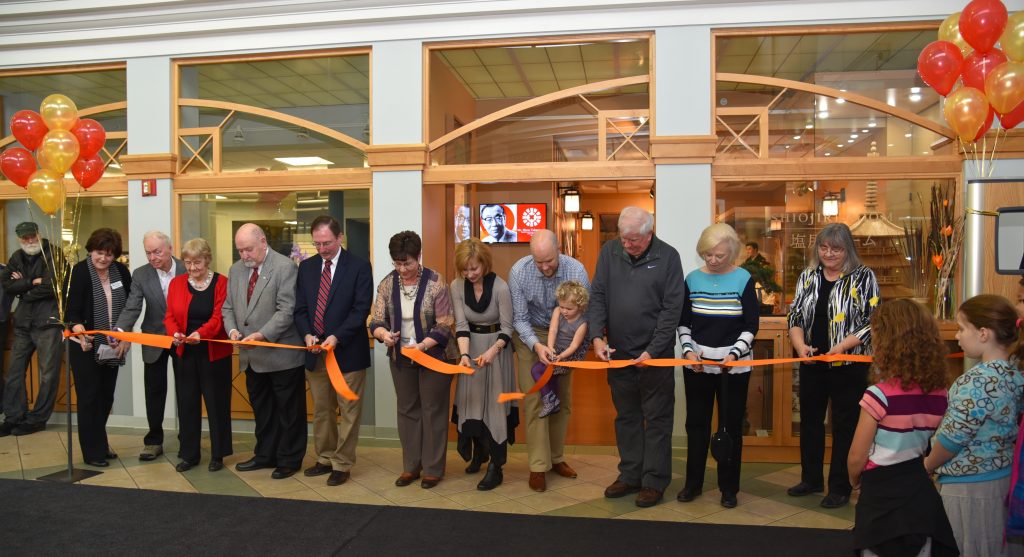Shiojiri Room

The city of Mishawaka and Shiojiri, Japan have been sister cities for 45 years. Both have items and objects in their cities complementing each other to maintain the sister city bond.
The Shiojiri Room at the Mishawaka-Penn-Harris Public Library was completed in March of 2017. The room contains artifacts from Shiojiri, wedding attire and the story of the relationship between the cities.
In a glass case, two mannequins wear traditional Japanese wedding garb modeled after one of the many people who have flown between Mishawaka and Shiojiri since their residents started exchanging gifts and letters in 1964. A placard shows photos and tells of the wedding of Ritsuko Osaki, a woman who graduated from Mishawaka High School in 1985 as an exchange student.
In another case rises the model of a five-story pagoda that artist Shigehisa Komatsu took 2½ years to craft out of wood.
Under the sign “A bridge to understanding,” a local craftsman built a footbridge to mimic the bridge at Shiojiri Niwa, the 1.3-acre Japanese garden next to Mishawaka’s Crawford Park. This bridge is painted orange because many traditional footbridges in Japan are also orange.
A mural-sized photo covers one wall depicting the main street running through Narai-juku, a historic town inside Shiojiri where several Mishawaka residents have walked on their visits to the city.
A display shows the book Sadako and the Thousand Paper Cranes by Eleanor Coerr. Around it is a string of brightly colored paper cranes, or birds, that were gifted to Helen Amos, the Battell Elementary School teacher in Mishawaka who inspired the sister-city relationship after she met a young man from Shiojiri on a train on the Indonesian island of Java.
A printed pamphlet is available in the room and gives a history of the sister-city relationship.
MPHPL is part of the Indiana Library Passport program due to the unique/historical significance of our MPHPL Shiojiri Room and Heritage Room.
Learn more by visiting the Indiana Library Passport website.






